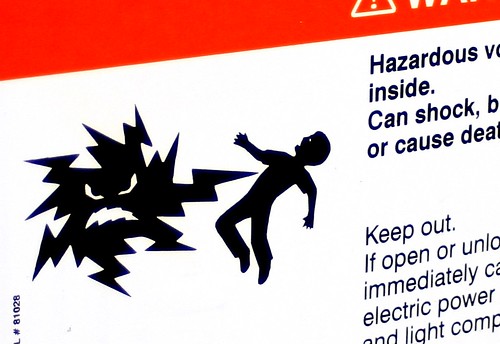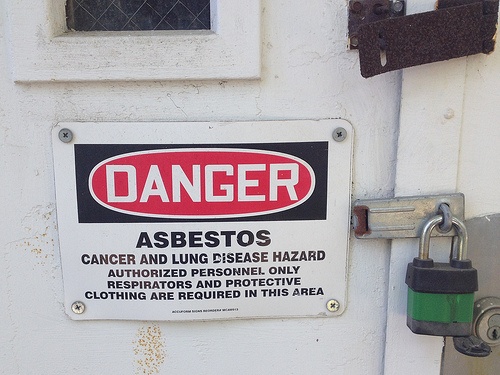Among its many workplace health and safety standards, the Occupational Safety and Health Administration (OSHA) requires employers to protect employees during equipment servicing and maintenance, to prevent “unexpected” equipment energization, start up, or release of stored energy. OSHA’s Control of Hazardous Energy Standard—more often called the Lockout/Tagout or “LOTO” Standard after its primary compliance requirements—requires employers to establish and implement safety procedures to control such hazardous energy. The LOTO Standard has changed very little since OSHA adopted it in 1989, but the agency has just published a formal request for information – public comments – about two changes in workplace equipment over the past 30 years that might affect energy hazards and justify revisions to the LOTO Standard. The rest of this note summarizes existing requirements and discussed OSHA’s review of control circuits and workplace robotics.
Read MoreAudit, Compliance and Risk Blog
Tags: Business & Legal, Employer Best Practices, Health & Safety, OSHA, Employee Rights, Hazcom
California Proposes Universal Wastes Rules For Photovoltaics
Posted by Jon Elliott on Tue, Jun 11, 2019
The Resource Conservation and Recovery Act (RCRA) assigns the US Environmental Protection Agency (EPA) and state hazardous waste agencies regulate “hazardous wastes,” including categories defined as “universal wastes” that are subject to reduced management requirements. EPA defines five categories, but also allows states to define additional categories (I wrote about this here). California’s Department of Toxic Substances Control (DTSC) has just proposed to add a new category of state-regulated universal waste covering “photovoltaic [PV] modules” to its regulations under the state’s Hazardous Waste Control Law (HWCL). The remainder of today’s blog summarizes these proposed universal waste PV requirements.
Read MoreTags: California Legislation, Environmental risks, Environmental, EHS, EPA, Hazcom, RCRA
The Resource Conservation and Recovery Act (RCRA) assigns the US Environmental Protection Agency (EPA) to define and then regulate “hazardous wastes.” EPA applies its considerable discretion to separate hazardous wastes into categories subject to distinct waste management requirements. One basis for these categorizations is relative risk – the more hazardous the waste the greater the controls required, and the smaller the threshold quantities necessary to trigger regulation. Beginning in 1995, EPA has defined a limited set of very common lower-risk wastes as “universal wastes,” and made them subject to special rules intended to encourage recycling (40 CFR part 273). The rest of this note summarizes universal waste requirements.
Read MoreTags: Health & Safety, Environmental risks, Environmental, EPA, Hazcom, RCRA
Bureau of Land Management Amends Methane and Waste Prevention Rule
Posted by Kathy McKinney-Tovar on Tue, Apr 23, 2019
The Bureau of Land Management (BLM) issued a final rule (the 2018 rule) on September 28, 2018 (83 FR 49184) that revised, rescinded, or replaced requirements in its “Waste Prevention, Production Subject to Royalties, and Resource Conservation” (the 2016 rule) (81 FR 83008). The 2016 rule, also known as the Methane and Waste Prevention Rule, required operators of onshore federal and Indian (other than Osage Tribe) leases to take various actions to reduce the waste of gas. The rule established clear criteria for when flared gas qualified as waste and was, therefore, subject to royalties, and also clarified which on-site uses of gas were exempt from these royalties. Prior to the 2016 rule, provisions related to venting, flaring, and royalty-free use of gas were contained in the agency’s 1979 Notice to Lessees and Operators of Onshore Federal and Indian Oil and Gas Leases, Royalty or Compensation for Oil and Gas Lost [NTL–4A]).
Read MoreTags: Hazcom, Oil & Gas, site auditing
EPA’s New Chemical Review Priorities Should Encourage User Reviews Too
Posted by Jon Elliott on Tue, Apr 09, 2019
The Environmental Protection Agency (EPA) has just proposed to assign chemical review priorities for 40 chemicals, as required by the 2016 Amendments to the Toxic Substances Control Act (TSCA; the “Frank R. Lautenberg Chemical Safety for the 21st Century Act”). As required by the 2016 Amendments, the proposal identifies 20 high priority chemicals for evaluation within three years, and 20 low priority chemicals that do not require further evaluation. Once each evaluation is completed, EPA is to determine appropriate regulatory requirements. Organizations that manufacture, process or use any of these chemicals should follow the rulemaking and evaluation process(es), and consider possible substitutes in order to reduce hazards and possible regulatory changes after completion of each relevant evaluation.
Read MoreTags: Environmental risks, Environmental, EPA, Hazcom, tsca
EPA Massively Updates National Chemical TSCA Inventory Database
Posted by Jon Elliott on Tue, Mar 26, 2019
The Environmental Protection Agency (EPA) has just made massive updates to the largest national data base of chemical information, the TSCA Inventory. Since 1976, the Toxic Substances Control Act (TSCA) has provided EPA with broad authorities to collect information about chemical substances in commerce in the U.S., including new chemicals that manufacturers and importers hope to bring into commerce. Information about all these substances is collected in the TSCA Inventory.
Read MoreTags: Environmental risks, Environmental, EPA, Hazcom, tsca
After a long rulemaking, the US Environmental Protection Agency (EPA) has just promulgated rules defining certain waste pharmaceuticals as “hazardous wastes” under the Resource Conservation and Recovery Act (RCRA), and establishing standards for their management by selected healthcare and “reverse distribution” waste management facilities. These regulations replace general RCRA generator and treatment requirements otherwise applicable to hazardous wastes.
Read MoreTags: Health & Safety, EPA, Hazcom, RCRA, pharmaceuticals
California Requires Pharmaceutical and Sharps Waste Stewardship
Posted by Jon Elliott on Tue, Jan 29, 2019
Beginning January 1, 2019, a new California law establishes extensive requirements for proper management of waste pharmaceuticals and “sharps.” These new provisions complement – but aren’t actually well-connected to -- medical waste management requirements (I outlined typical state-based requirements here), and workplace provisions to protect workers from “bloodborne pathogens” that may be present because of health and medical procedures and the wastes they generate (I discussed OSHA’s “BBP” Standard here). The rest of this note summarizes these new requirements, adopted by Senate Bill (SB) 212 (Jackson).
Read MoreTags: Health & Safety, California Legislation, Environmental risks, Environmental, Hazcom, pharmaceuticals
EPA is Considering a Regulatory Roadmap For Additional Uses of Asbestos
Posted by Jon Elliott on Tue, Oct 02, 2018
The Environmental Protection Agency (EPA) is expanding its attention to asbestos and its associated hazards, including both existing uses and possible new uses. EPA is undertaking these initiatives under the aegis of extension of its authority under the Toxic Substances Control Act (TSCA), enacted in 2016 Amendments to TSCA -- the “Frank R. Lautenberg Chemical Safety for the 21st Century Act.” (I wrote about provisions relating to existing chemical here, and for new chemicals and new formulations of existing chemicals here).
Read MoreTags: Environmental risks, Environmental, EPA, Hazcom, tsca
Circuit Court Ends a Decade of Delay by Ordering EPA to Cancel a Hazardous Pesticide
Posted by Jon Elliott on Tue, Sep 18, 2018
The Federal Insecticide, Fungicide and Rodenticide Act (FIFRA) empowers the Environmental Protection Agency (EPA) to define and regulate pesticides meeting statutory qualifications, providing extensive procedural directions how to do so. In addition, the Federal Food, Drug, and Cosmetic Act (“FFDCA”) authorizes EPA to regulate the use of pesticides on foods according to specific statutory standards, and grants EPA limited authority to establish tolerances for pesticide residuals on foods. These directions govern EPA’s analyses of applications for registration, ongoing evaluations of evolving scientific understanding and practical experience with pesticides that have been registered, and response to public comments and petitions (I provided a basic summary of FIFRA registration procedures here).
Read MoreTags: Health & Safety, Environmental risks, Environmental, EPA, Hazcom










